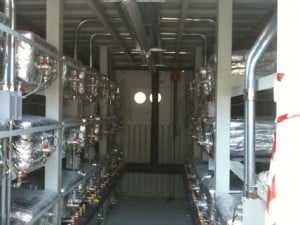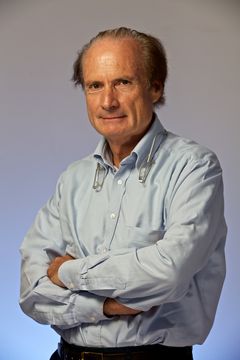An article on Andrea A. Rossi‘s visit to the Massachusetts State House was published today in the Boston Globe business section.
Republican Bruce Tarr, a Massachusetts State legislator from Gloucester active in alternative energy, invited Mr. Rossi to discuss possibilities for manufacturing E-Cat units within the state.

Entitled “Hope, skepticism for cold fusion“, the piece by D.C. Denison described a “roomful of skeptical people”, including Mr. Tarr. Nevertheless, the legislator is open to the economic potential that this new science and technology can generate.
“My thought process was pretty simple: If it works, I want this technology to be developed and manufactured in Massachusetts,’’ Tarr said.
He is not alone.
States across the US are experiencing budget shortfalls that have affected counties and cities with severe cuts to social services. Dropping property values and high unemployment has ground state revenues down further, even as costs increase. Unemployment funds have reached extreme lows and some states are close to running out of benefits for jobless workers.
Fresh technology based on a new kind of physics is a godsend to State budget committees. Cold fusion technology is in the nascent stage, and Mr. Rossi’s steam generator is the first step in a wide-open field of research and development that will generate new roles and jobs for people worldwide.

As a thermal energy generator, the Energy Catalyzercan be used for heating work spaces or as a hot-water heater at a fraction of current costs, and its clean, a welcome development for environmental programs which have seen their budgets slashed too.
The fuel is hydrogen, the main element in water, and the reaction occurs in a powder made of nickel, the same metal that is in a US 5 cent piece. There is no carbon dioxide emitted by this reaction and there are no radioactive materials used.
Further developments will integrate thermo-electric generators that can turn the steam into electricity. When electrical costs are one-tenth, or even one-hundredth, of what they are now, global economies will be rocked by change, with local economies standing to benefit. Cold fusion energy technology does not need to be connected to a grid system.
It’s easy to see why states are courting the inventor of the first cold fusion energy technology to be released. As Dr. Michael McKubre noted in his recent public talk, “Energy is currency.”
Since States can’t print their own money the way the US federal government can, cold fusion power will have to do.
Related Links
Hope, skepticism for cold fusion by D.C. Denison from Boston Globe November 28, 2011
E-Cat North European Sales Division http://ecat.com/
SRI International: “What happened to cold fusion?” video of a public talk by Dr. Michael McKubre posted by Ruby Carat November 21, 2011



